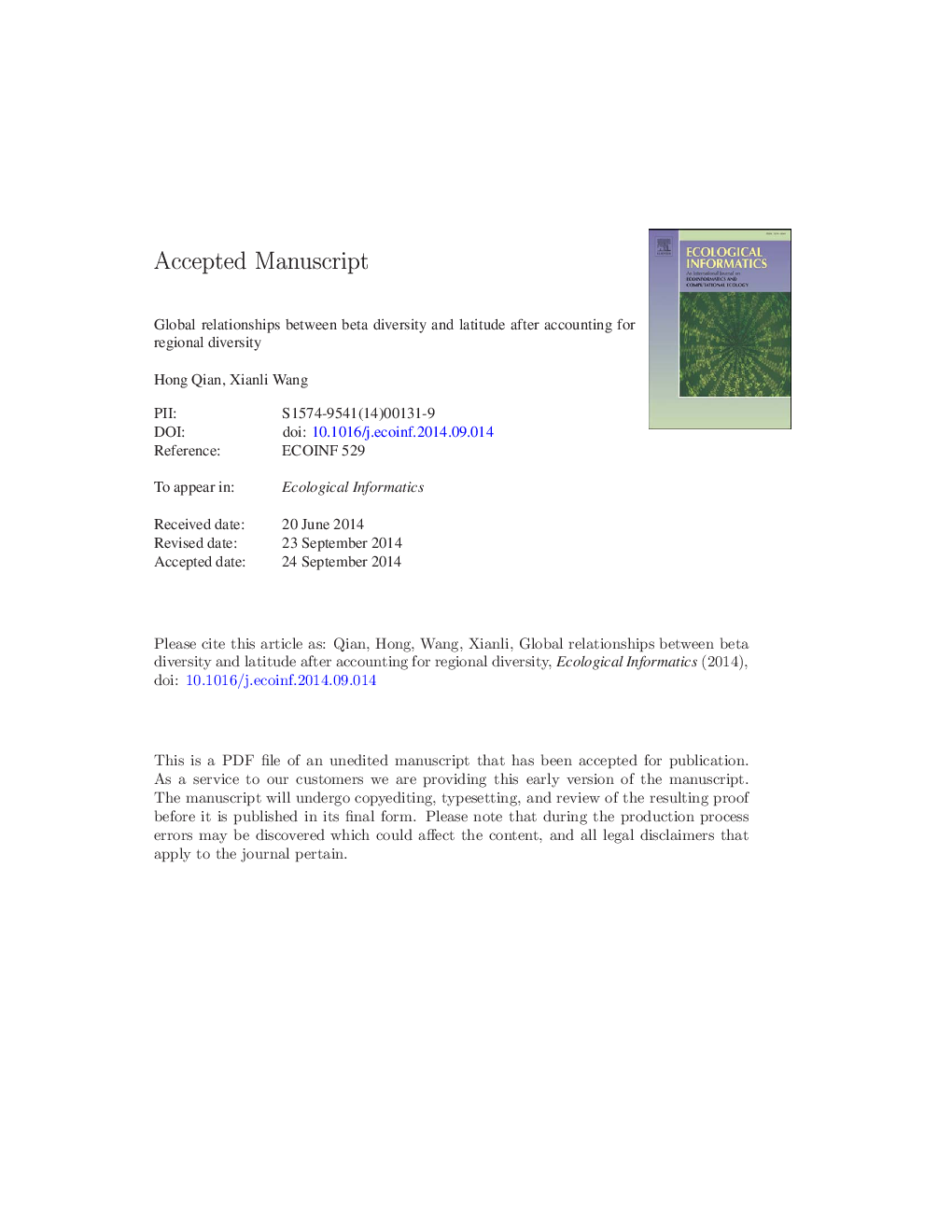| Article ID | Journal | Published Year | Pages | File Type |
|---|---|---|---|---|
| 6295944 | Ecological Informatics | 2015 | 22 Pages |
Abstract
The latitudinal gradient of beta diversity (i.e. the increase of beta diversity from polar to equatorial regions) has been documented in a number of studies, but the causes of the gradient remain poorly resolved. The latitudinal gradient of beta diversity may result from the latitudinal gradient of regional (gamma) diversity but previous studies have not assessed whether there are relationships between latitude and beta diversity after accounting for regional diversity. The aim of the present study is to test whether there are relationships between latitude and beta diversity for terrestrial vertebrates after accounting for regional diversity. The relationships between beta diversity and latitude were examined for 72 latitudinal gradients of beta diversity (located in 24 longitudinal transects) for amphibians, birds, and mammals from across the globe. Beta diversity was quantified with the Jaccard index of dissimilarity between biological assemblages. We used both linear and non-linear regression analyses to determine the relationship between beta diversity and latitude. Beta diversity generally increases from polar to equatorial regions for all three taxa. Latitude and regional species richness together explain on average 47.6% of the variation in beta diversity across the three taxa. Latitude explains, on average, 20.5% of the variation in beta diversity independently and explains additional 10.0% of the variation in beta diversity jointly with regional species richness. Our study showed that latitude explains a substantial amount of the variation in beta diversity after accounting for regional species richness.
Related Topics
Life Sciences
Agricultural and Biological Sciences
Ecology, Evolution, Behavior and Systematics
Authors
Hong Qian, Xianli Wang,
